The " AMERICAN BASKETBALL GLOSSARY " by Fred BULLOT ©
The v2 Forum :: Sport :: Other sports :: Basketball
Page 1 of 1
 The " AMERICAN BASKETBALL GLOSSARY " by Fred BULLOT ©
The " AMERICAN BASKETBALL GLOSSARY " by Fred BULLOT ©

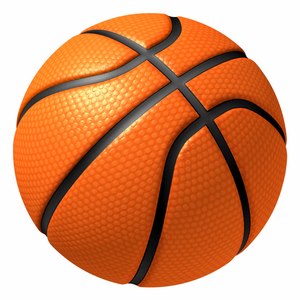

The " AMERICAN BASKETBALL GLOSSARY " ©
The American Basketball Glossary gives an overview of terms used in and around Basketball, especially in terms of coaching !
A
Advance step : A step in which the defender's lead foot steps toward their man, and her back foot slides forward.
Assist : A pass thrown to a player who immediately scores.
B
Backcourt : The half of the court a team is defending. The opposite of the frontcourt. Also used to describe parts of a team: backcourt = all guards (front court= all forwards and centers)
Back cut : See cuts, Backdoor cut
Backdoor cut : See cuts
Back screen : See Screens
Ball fake : A sudden movement by the player with the ball intended to cause the defender to move in one direction, allowing the passer to pass in another direction. Also called "pass fake."
Ball reversal : Passing the ball from one side of the court to the other.
Ball screen : See Screens
Ball side : The half of the court (if the court is divided lengthwise) that the ball is on. Also called the "strong side." The opposite of the help side.
Banana cut : See cuts
Bank shot : A shot that hits the backboard before hitting the rim or going through the net.
Baseball pass : A one-handed pass thrown like a baseball.
Baseline : The line that marks the playing boundary at each end of the court. Also called the "end line."
Baseline out-of-bounds play : The play used to return the ball to the court from outside the baseline along the opponent's basket.
Basket cut : See cuts.
Blindside screen : See Backscreen
Block : (1) A violation in which a defender steps in front of a dribbler but is still moving when they collide. Also called a "blocking foul." (2) To tip or deflect a shooter's shot, altering its flight so the shot misses. (3) The small painted square on the floor next to the basket just outside the lane.
Block out : To make contact with an opposing player to establish rebounding position between the player and the ball. Also called "box out."
Bounce pass : A pass that bounces once before reaching the receiver.
Box-and-one : A combination defense in which four defenders play zone in a box formation, and the fifth defender guards one player man-to-man.
Box out : See block out.
Box set : A formation in which four players align themselves as the four corners of a box. Often used for baseline out-of-bounds plays.
Bump the cutter : To step in the way of a cutter who is trying to cut to the ball for a pass.
C
Center : (1) The position in which a player, usually the tallest player on the team, stays near the basket. (2) The player who plays that position.
Center circle : The painted circle at midcourt used for the opening jump ball.
Charge : (1) A violation when a player with the ball runs into a defender who is standing still. Also called a "charging foul." (2) To commit that violation.
Chest pass : An air pass thrown from the passer's chest to a teammate's chest. It can be a one-handed or two-handed pass.
Chin the ball : To hold the ball with both hands under the chin, elbows out, to protect the ball.
Clear-Out Play : A set play designed to clear an area of the court of all offensive players without the ball so the player with the ball can play 1-on-1.
Closing out : When a defender sprints to guard a player who has just received a pass.
Combination defense : A defense that is part man-to-man and part zone. Also called a "junk defense."
Continuity offense : A sequence of player and ball movement that repeats until a good shot is created.
Control dribble : A dribble maneuver in which the player keeps their body between the defender's body and the ball.
Crossover dribble : A dribble maneuver in which a player dribbles the ball in front of their body so they can change the ball from one hand to the other.
Cross screen : A movement in which a player cuts across the lane to screen for a teammate.
Curl : see cuts
Curl pass : A low, one-handed pass made by stepping around the defender's leg and extending the throwing arm. Also called a "hook pass."
Cut : A sudden running movement to get open for a pass.
Banana Cut : A wide, curving cut, as opposed to a cut that is a straight line.
Backdoor Cut : An offensive play in which a player on the perimeter steps away from the basket, drawing the defender with them, and suddenly cuts to the basket behind the defender for a pass. The opposite of a I-cut. Also : Back cut.
Basket Cut : A cut toward the basket.
Curl Cut : A cut that takes the player around a screen toward the basket.
Fade Cut : A cut that takes the player away from the ball. For example after using a baseline screen or on the defenders help (like shown in the graphic.Also: Flare cut.
Flash Cut : A cut that takes the player from the lowpost to the highpost, or in the middle of the paint from behind the defence (mostly used to describe a cut against a zone).
Flex Cut : A cut from the weakside corner to the ballside lowpost, using a screen at the weakside lowpost.
I-cut : An offensive play in which a player on the perimeter steps toward the basket, drawing the defender with them, and suddenly cuts to the perimeter for a pass. The opposite of a backdoor cut.
Popout Cut : A cut taken around a screen straight to the ball.
Shuffle Cut : A cut that takes a player around a screen on the highpost to the basket.
Shallow Cut : A cut from the top of the key to the ballside corner.
UCLA Cut : A cut that takes the player from the top of the key to the lowpost over a screen at the highpost.
V-cut (or L-Cut when 90° angle): e.g. The player starts at the lowpost and cuts to the highpost, initiates contact with the defender and then cuts to the wing. It can also be executed from the wing; in this case the player cuts to the lowpost and comes back out.
D
Defensive rebound : A rebound made off a missed shot at the basket a team is defending.
Defensive slide : The quick "step-slide" movement a defender makes when closely guarding the dribbler.
Defensive stance : The stance used to play defense-knees bent, feet wide, arms out, etc.
Defensive stop : Gaining possession of the ball before the offensive team scores.
Defensive transition : When the team on offense suddenly gives up possession of the ball and has to convert from offense to defense.
Delay offense : An offense used to take more time with each possession.
Denial defense : A defense in which a defender tries to prevent their man from receiving a pass.
Denial stance : The stance used to play denial defense-body low, knees bent, hand and foot in the passing lane.
Deny the ball : To use a denial stance to keep the offensive player from receiving a pass.
Diamond-and-one : A combination defense in which four defenders play zone in a diamond formation and the fifth defender guards a specific offensive player man-to-man.
Diamond Press : A full-court press with a 1-2-1-1 formation.
Dishing : A slang term for passing the ball to a player open for a shot, usually after dribble penetration.
Double down : To drop from the perimeter, leaving your man or zone, to double-team a low post player.
Double low stack : When two offensive players set up at one of the blocks to run a play.
Double screen : See Screens
Double-teaming : A defense in which two defenders guard the same offensive player at the same time.
Down screen : See Screens
Dribble : (1) To advance the ball by bouncing it on the floor. (2) The bounce of the ball caused by a player pushing the ball downward.
Dribble penetration : When a dribbler is able to drive into the lane; she "penetrates" the defense.
Drive : To attack the basket by dribbling hard at it.
Drop step : A low post move when an offensive player with her back to the basket swings one leg around the defender and uses it as a pivot foot to gain inside position.
E
Elbow : The corner made by the intersection of the free throw line and the lane line. Each lane area has two elbows.
End line : See baseline.
Entry : Beginning of a play. Can be used for Continous-, Set- and Special plays. Most popular Entries: UCLA Cut, Power, Zipper Cut, Wing Exchange, Horns
F
Face up : See square up.
Fade cut : See cuts.
Fan the ball : When the defense forces the ball toward the sideline.
Fast break : A play in which a team gains possession of the ball (through a defensive rebound, steal, or made shot) and then pushes the ball toward the other basket as fast as possible, hoping to catch the other team off guard and score an easy shot.
Field goal : A 2-or 3-point basket.
Filling the lanes : A fast break in which players from the offensive team run up the court in the right lane, the middle lane, and the left lane.
Flagrant foul : Excessive physical contact (punching, kicking, etc.).
Flare cut : See cuts.
Flare Screen :See Screens
Flash :See cuts.
Forward : A position usually played by a tall, athletic player. A "small forward" or a "3" plays on the wing, and a power forward or a "4" plays in the high or low post area.
Foul : A violation of the rules.
Foul line :See free throw line.
Foul shot : See free throw.
Foul trouble :(1) Player foul trouble occurs when a player accumulates three or four fouls and is in danger of fouling out. (2) Team foul trouble occurs when a team accumulates four or more team fouls in a quarter and is " in the bonus ".
Free throw : An uncontested shot taken from the free throw line as a result of a foul. Also called a "foul shot." A successful (made) free throw is worth 1 point.
Free throw line :The line a player stands behind to shoot a free throw. Also called the "foul line."
Free throw line extended : An imaginary line extending from one end of the free throw line to the sidelines.
Front : To guard a player by standing directly in front of him and therefore between him and the ball.
Frontcourt : A team's offensive half of the court. The opposite of the backcourt. Also used to describe parts of a team: front court = all forwards and centers, backcourt = all guards
Full-court press :A man-to-man or zone defense in which the players guard the other team in the frontcourt. Also called a "press."
Funnel the ball : When the defense forces the ball toward the middle.
G
Give-and-go : An offensive play in which the player with the ball passes (gives) to a teammate and cuts (goes) to the basket to receive a return pass. One of the game's basic plays.
Goaltending : A violation in which a defender touches a shot as it nears the basket in a downward flight.
Guard : (1) A position on the perimeter. The point guard or "1" brings the ball up the court and begins the offense. The shooting guard or "2" is usually the teams best outside shooter. (2) To defend an offensive player closely.
Guide hand : The shooter's nonshooting hand. See also shooting hand.
H
Half-court line : The line at the center of the court parallel to the sidelines that divides the court in half. Also called the "midcourt line."
Hand-check : To make hand contact with a dribbler while guarding them.
Hedge : In a pick-and-roll, when the screener's defender steps into the path of the dribbler so the dribbler has to hesitate, giving their defender time to get around the screen.
Help and recover : A defensive move in which a defender leaves her assigned player to guard a teammate's assigned player and then goes back to guard their own player.
Help side : The half of the court (if the court is divided lengthwise) that the ball in not on. Also called the "weak side." The opposite of the ball side.
Help-side stance : The stance used to guard a help-side offensive player. See also pistol stance.
Hesitation dribble : A dribble maneuver in which the dribbler hesitates, pretending to pick up their dribble, but suddenly continues to the basket. Also called a "stop-and-go dribble."
High post : The area around the free throw line.
Hook shot : A one-handed shot taken with a sweeping, windmill motion.
I
Inbound : To pass the ball to a teammate on the court from out-of-bounds.
Inbounder : The player who inbounds the ball.
Inside-out dribble : An advanced dribbling move, a fake crossover dribble.
Intentional foul : A foul that occurs when a player makes illegal contact with an opposing player without intending to get the ball.
Isolation play : An offensive play designed to have a specific player attack the basket 1-on-1. Also called "iso play."
J
Jab-and-cross : A play in which the offensive player makes a jab step in one direction and then follows it by driving by the defender in that direction.
Jab step : A short (6 to 8 inches) out-and-back step by an offensive player to see how the defender reacts.
Jam the cutter : When a defender steps in the way of a cutter to prevent them from cutting to the ball.
Jump ball : A procedure used to begin a game. The referee tosses up the ball in the center circle between two opposing players, who jump up and try to tip it to a teammate. Also called the "opening tip."
Jump hook : A variation of the traditional hook shot in which the shooter takes the shot with both feet in the air.
Jump shot : A shot in which the shooter faces the basket and releases the ball after jumping into the air.
Jump stop : The action of coming to a complete stop, legs apart and knees bent, when dribbling or running; can be a one-foot or two-foot jump stop.
Jump to the ball : When a defender, after her man passes the ball, changing to a denial position so their man can't cut between her and the ball.
Junk defense : See combination defense.
L
Lane : The rectangular painted area between the baseline, the lane lines, and the free throw line. Also called the "paint."
Laneline extended : A imaginary line from the junction baseline and laneline to the same junction on the other half of the court. (used to describe a proper spacing in a four out offense).
Layup : A shot taken next to the basket in which the shooter extends their arm, lifts their same-side knee, and aims the ball at the upper corner of the painted square on the backboard.
Loose-ball foul : A foul committed when neither team has possession of the ball.
Low post : The area on one side of the basket around the block.
M
Man offense : See man-to-man offense.
Man-to-man defense : A team defense in which each defender guards a specific player or man. Also called "player-to-player defense."
Man-to-man offense : A team offense used against man-to-man defense. Also called "man offense."
Midcourt line : See half-court line.
Mirror the ball : To follow the movement of the ball with your hands when closely guarding a player who is pivoting.
Moving pick : A violation that happens when a screener leans or moves after setting a screen.
N
Nonshooting foul : A foul committed against a player who is not in the act of shooting.
O
Off-ball screen : See Screens
Offensive rebound : A rebound at the basket a team is attacking.
Offensive transition : When the team on defense suddenly gives up possession of the ball and has to convert from defense to offense.
On-ball defense : Defense that occurs when a defender guards the player with the ball.
On-ball screen : See Ballscreen
One-and-one : Free throws awarded to a team once its opponent has committed seven personal fouls. If the shooter's first free throw is successful, they shoot a second free throw.
One-Guard Offense : A team offense used against zones with two-guard fronts (2-3 and 2-1-2 zones).
Open stance : The stance used to play help-side defense-feet apart, body balanced, knees bent, arms out.
Outlet : (1) To pass the ball after a defensive rebound to start the fast break. (2) The player who stays in the backcourt to receive an outlet pass.
Outlet pass : An overhead pass thrown by a defender that starts the fast break.
Overhead pass : A two-handed pass thrown from above the player's head.
Overtime : A 5-minute extra period played when the game is tied at the end of regulation play.
P
Paint : See lane.
Palming : See carrying the ball.
Pass fake : See ball fake.
Passing lane : An imaginary line from the player with the ball to a teammate. If a defender is in the way, the passing lane is closed.
Personal foul : A penalty assessed on a player who commits an illegal action.
Pick : See screen.
Pick-and-roll : A two-person play in which on offensive player sets a screen (pick) on the ball handler's defender and cuts (rolls) to the basket after the ball handler drives by the screen. Also called a "screen and roll." A common play in college and the pros.
Pistol stance : When a help-side defender is guarding their man, they point one hand at their man and one hand at the ball (as if they're holding a pistol).
Pivot : The action when the player with the ball spins on one foot and steps with their other foot to protect the ball from a defender.
Pivot foot : The foot that the offensive player spins on while pivoting.
Player-control foul : A nonshooting offensive foul.
Player screen : See off-ball screen.
Player-to-player defense : See man-to-man defense.
Point guard : (1) A position played by a team's primary ball handler, the player who brings the ball up the court and begins the offense. Also called the "1." (2) The player who plays that position.
Popout cut : See cuts.
Post : (1) A player who plays in and around the lane area. A center or forward (a "4" or a "5"). (2) An area of the court, as in the low post or the high post.
Post moves : Back-to-the-basket scoring moves made by players near the basket.
Post-up : (1) An offensive move in which an offensive player (usually a forward or a center) positions himself close to the basket with their back toward the basket and the defender behind them so the offensive player can receive a pass. (2) To make that move.
Power forward : A position played by the larger of the forwards on the floor, usually a good scorer and rebounder. Also called the "4." (2) The player who plays that position.
Power layup : A two-footed layup.
Press break : A team offense used against a press defense. Also called "press offense."
Press offense : See press break. Pressure man-to-man defense: An aggressive defense where the defenders stay between their man and the ball.
Primary break : A fast break that involves only a few players from each team.
Pump fake : See shot fake.
Push pass : A one-handed air pass.
R
Ready stance : The balanced position from which a player is ready to run, jump, slide, or pivot. Their knees are bent, hands are up and out, back is straight, and head is up.
Rebound : (1) A missed shot that comes off the backboard or rim. (2) To fight for and gain control of a missed shot that comes off the backboard or rim.
Rejection : A blocked shot.
Retreat step : A step in which the defender's back foot steps toward the baseline, and the lead foot slides in place.
Runner : A shot that the player shoots while running, without taking the time to set up the shot. Also called a "floater."
Running clock : When the clock in a game isn't stopped every time the referee blows the whistle to ensure that the game ends on time and the next game can begin when scheduled. Often used in middle school and AAU games.
S
Safety : The offensive player at the top of the circle.
Sag : A tactic in which a defender leaves their man or zone and drops into the lane to help protect the basket.
Sagging man-to-man defense : A conservative defense in which the defenders stay between their man and the basket.
Screen : A play in which an offensive player runs over and stands in a stationary position next to a teammate's defender to free up the teammate to dribble or to receive a pass. Also called a pick.
Ball Screen : Screen on a defender, who is defending the ballcarrier
Back Screen : Screen in the back of the defender
Cross Screen : Screen from one Lowpost to the opposite Lowpost
Double Screen : Screen set by two player next to each other. This screen is also called Parallel Screen.
Down Screen : Screen from the wing to the Lowpost
Up Screen : see UCLA Screen
UCLA Screen : Screen from the Lowpost to the Top of the Key
Flare Screen : Screen for a player moving away from the ball
Off-Ball Screen : A screen set on a defender guarding an offensive player who doesn't have the ball.
Shot Screen : A screen set for a player to shoot the ball, mostly on the weakside
Staggered Screen : two Screens not next to each other set simultaneous for the same cutter.
Screen away : To pass in one direction and set a screen for a teammate in the opposite direction.
Screener : A player who sets a screen.
Sealing the defender : After setting a screen, the screener does a reverse pivot to "seal" the defender-put the defender on her back.
Secondary break : A fast break that involves most of the players from each team.
Set play : A sequence of player and ball movement that has an end.
Shagger : A player who, in a drill, collects loose balls and returns them to the passer.
Shell drills : Defensive drills designed to work on all aspects of defense.
Shooter's roll : When a shot doesn't go through the basket cleanly, but bounces around softly before dropping through.
Shooting foul : A violation that happens when a defender fouls the shooter and the shot scores. The shooter is awarded 2 points and a free throw.
Shooting guard : (1) A position played by a perimeter player who is usually the team's best outside shooter. Also called the "2." (2) The person playing this position.
Shooting hand : The hand used to shoot the ball. See also guide hand.
Shot clock : The clock used to limit the time allowed for a team to attempt a shot. Shot clocks are used in pro and college games, in some high school leagues, but not in middle school and youth leagues.
Shot clock violation : A violation that occurs when the team with the ball doesn't get a shot off during the allotted time. It results in a change of possession.
Shot fake : A movement in which the player with the ball acts as if they are about to shoot. It is designed to trick the defender into straightening up, allowing the player with the ball to dribble past them. Also called a " pump fake ".
Sideline : The line at each side of the court that marks the boundary of the playing surface.
Sideline play : A play used by the offensive team to put the ball back in play from the sideline.
Sixth man : The first substitute who comes off the bench to replace a starter.
Skip pass : An overhead pass from one side of the court to the other over the defense.
Speed dribble : A dribble maneuver in which the player pushes the ball ahead of her and bounces it at chest height.
Special plays : a play for a specific situation and/or a specific player.
Spin dribble : A dribble maneuver in which the player does a reverse pivot while bringing the ball around them so it ends up in their other hand.
Split-line : the imaginary line between the two baskets. Mostly used to describe a position for defenders.
Splitting the screen : When the screener, seeing her defender hedging, gets out of her screening stance and cuts to the basket for a pass. Splitting the trap: When a trapped player steps in between the defenders to pass the ball.
Square up : To pivot so the shoulders and feet face the basket. Also called "face up."
Staggered screen : When two players not next to each other set simultaneous screens for the same cutter.
Steal : (1) To intercept a pass and gain possession of the ball. (2) The name for the action.
Stop-and-go dribble : See hesitation dribble.
Stop and pop : An offensive move in which a player comes to a sudden stop, picks up her dribble, and shoots the ball.
Strong side : See ball side. The opposite of "weak side."
Substitute : A player who comes in the game to replace another player. Also called a "sub."
Swing step : A defensive step in which the defender does a reverse pivot with one foot and stays in her on-ball stance.
Switch : A movement in which two defenders change the offensive player each is playing.
T
Technical foul : A violation, such as a player or coach using profanity, that results in the other team getting free throws and possession of the ball. Also called a "T," as in "T him up."
Tip-off : The opening jump ball at the center circle that begins a game.
Trailer : An offensive player, usually a center or a power forward, who trails the first wave of players on the fast break.
Transition : A movement that occurs when a team changes from offense to defense (defensive transition) or from defense to offense (offensive transition).
Trap : A defensive move in which two defenders guard the player with the ball by forming a V with their bodies.
Traveling : A violation that occurs when the player with the ball takes two many steps without dribbling. This is a common occurrence with young players.
Triangle-and-two : A combination defense in which three defenders play zone in a triangle formation and two defenders guard specific players man-to-man.
Triple threat position : The bent knees stance that allows the player three options: dribble, pass, or shoot.
Turnaround jump shot : A shot by a player in the low post in which they catch the ball with their back to the basket, makes a forward pivot so they face the basket, and shoots a jump shot.
Turnover : A loss of possession of the ball caused by a steal, an offensive foul, a held ball, or a poor pass.
Two-Guard Offense : A team offense mostly used against zones with one-guard fronts (1-2-2 and 1-3-1).
Two-shot foul : A violation that occurs when a defender fouls the shooter, and the shot misses. The shooter is awarded two free throws.
U
UCLA Screen : See Screens
Up-and-under move : An advanced post move that starts out like a turnaround jump shot, but instead of shooting, the post player "pump fakes," causing the defender to rise out of their defensive stance. The post player steps by the defender and finishes with a layup.
Up screen : See UCLA Screen
V
V-cut : See cuts.
W
Weak side : See help side.
Wing : (1) The area on the court where the 3-point arc meets the free throw line extended. (2) The offensive player who plays in that area.
Z
Zone defense : A team defense in which players are assigned to guard specific areas of the court, rather then layers. Most popular zone alignments: 2-3, 3-2, 1-3-1, 1-1-3, 2-1-2
Zone offense : A team offense used against a zone defense.
Zone press defense : Full court zone defense, mostly used to trap the ball. Most popular alignments: 1-3-1, 1-2-1-1 (Diamond), 1-2-2, 2-2-1

This " one-of-a-kind " guide has been made in 2011 by Fred BULLOT # 1 Elite American Basketball Academies Scout in Europe & ASIA

Contact Fred @
E-mail : fredbullot@hotmail.com
E-mail : fredbullot@yahoo.com
Blog : http://fredbullot.over-blog.com/#
Facebook " fred bullot " : https://www.facebook.com/fredbullot
Facebook " Indian Basketball Student-Athletes in the USA " (50 000 members / The " # 1 Basketball Group on Facebook ") !! : https://www.facebook.com/groups/181895578687549/
Twitter : https://twitter.com/fredbullot
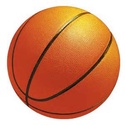


Le " LUCKY LUKE " * :bball: est le meilleur jeu de basketball pour s'éclater avec ses potes et / ou sa famille tout en améliorant ses fondamentaux (dribble, shoot, passe, rebond ..) et sa condition physique (cardio, détente verticale ..) !!!

Etapes de réalisation :
1/ Tous les joueurs (minimum 2, maximum 10) se placent en colonne (le meilleur devant, le moins bon dernier) derrière la ligne des lancers francs (située à l'extrémité de la raquette). Les 2 premiers ont un ballon, pas les autres. Sachez que celui qui commence la partie est désavantagé, étant donné qu'au lucky luke, le danger vient de derrière. :twisted:
2/ Le 1er joueur shoot, de la ligne des lancers francs (objectif : faire rentrer le ballon dans l'arceau). S'il marque, il récupère le ballon et fait la passe (imposer avec rebond pour niveau débutant à moyen afin d'éviter de recevoir le ballon dans " la tronche "
3/ Immédiatement après le déclenchement du shoot du 1er joueur, le second shoot (toujours des lancers francs) à son tour. Si le 1er joueur rate son shoot alors que le second marque avant lui (il annonce à haute voix " ELIMINE ") celui-ci est éliminé. :x
4/ Si le 1er joueur rate son shoot, le but est pour lui de récupérer le ballon (rebond) le plus vite possible et de marquer, d'où il veut cette fois-ci (position préférentielle/45° avec le panneau et dans la raquette si possible), avant que le second joueur avec un ballon ne score avant lui.
5/ Une fois que le 1er joueur a marqué son panier (il annonce à haute voix " QUALIFIE ") et fait la passe au 1er de la colonne et va se placer en dernière position de celle-ci.
6/ Plus il y a de joueurs éliminés, plus le rythme du " lucky luke " devient intense. Lors de la finale les 2 dernier joueurs avec ballon doivent se comporter comme des basketteurs (dribbler, pas le droit de toucher l'adversaire, ..) !! 8)
7/ Le dernier joueur qualifié est le vainqueur et gagne 1 point (le 1er joueur à 3 points gagne le " lucky luke "). :cheers:
- Pour les débutants ou enfants de petite taille faire toucher l'arceau ou le filet au lieu de marquer un panier.
- " lucky luke " pour joueurs de haut niveau : Début du jeu derrière la ligne des 3 pts puis ligne des lancers francs ..
* Version française du " KNOCKOUT " américain.

FFBB / Centre Génération Basket Argenteuil : LUCKY LUKE avec LE STAFF !!
Version française du " Knockout " !

https://youtu.be/I8HEUlzV1PA
Skillz Basketball Camp - " Knockout " Championship (Grades 3-6) / GOOD 8 YEAR OLD PLAYERS !!
American kids playing " Knockout " @ Skillz Basketball Camp ! :lol:
https://youtu.be/hYdNSZlUkvc
Keyan, Aarin & Eric playing " Knockout " / GOOD 8 YEAR OLD PLAYERS !!
Like 20 000 000 kids in the USA; Keyan, Aarin & Eric are playing " Knockout " every day in front of their house !! :bball:
https://youtu.be/3sxTWeXenhI
" Knockout " # 2 (Revenge on Keyan) / GOOD 8 YEAR OLD PLAYERS !!
Like 20 000 000 kids in the USA; Keyan, Aarin & Eric are playing " Knockout " every day in front of their house !! :bball:
https://youtu.be/x4l6b8q5ovk

This " one-of-a-kind " guide has been made in 2015 by Fred BULLOT # 1 Elite Prep Schools Basketball Scout in Europe & ASIA

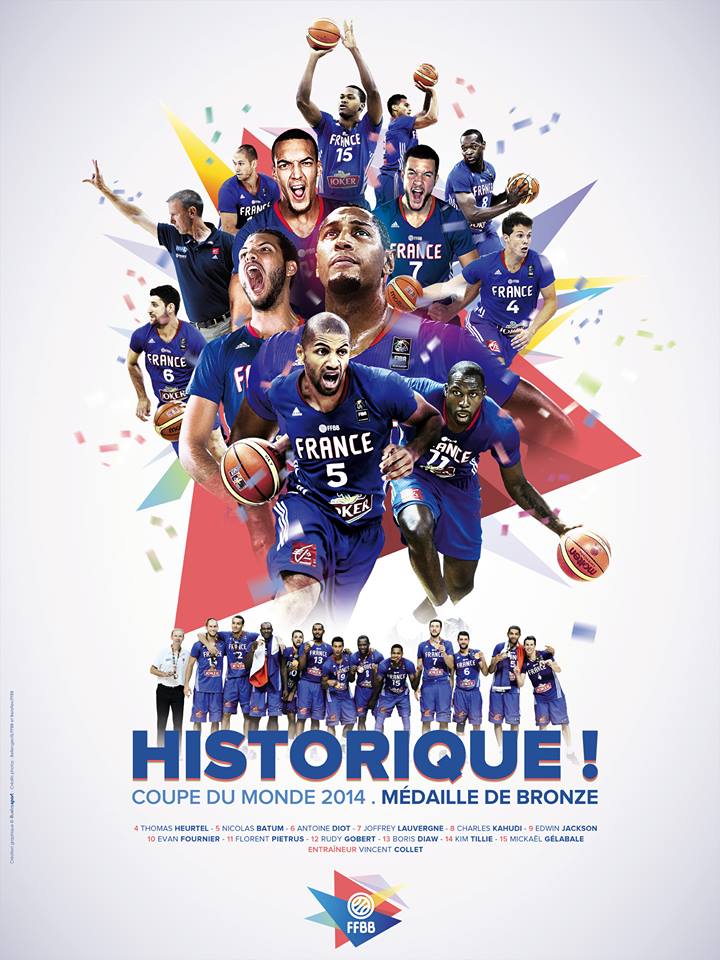
FRANCE # 2 BASKETBALL SUPER POWER in THE WORLD !!
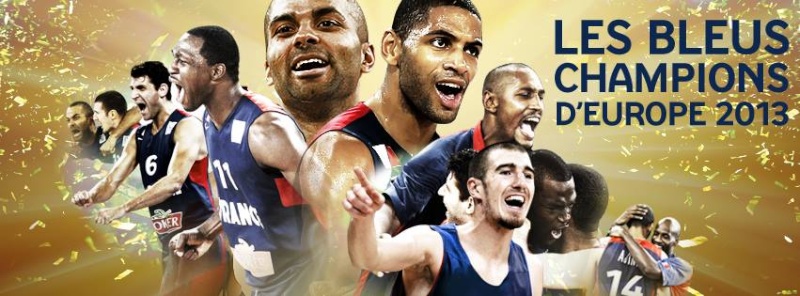
http://www.ffbb.com/
https://www.facebook.com/ffbasketball
Le titre de champion d'Europe de l'équipe de France vous a donné envie de vous mettre au basket ?
On vous livre tous les conseils pratiques pour réussir vos débuts sur les traces de Tony Parker et de ses coéquipiers.
BIEN DEBUTER LE BASKET avec ILOSPORT

http://www.ilosport.fr/basketball/conseils/bien-debuter/
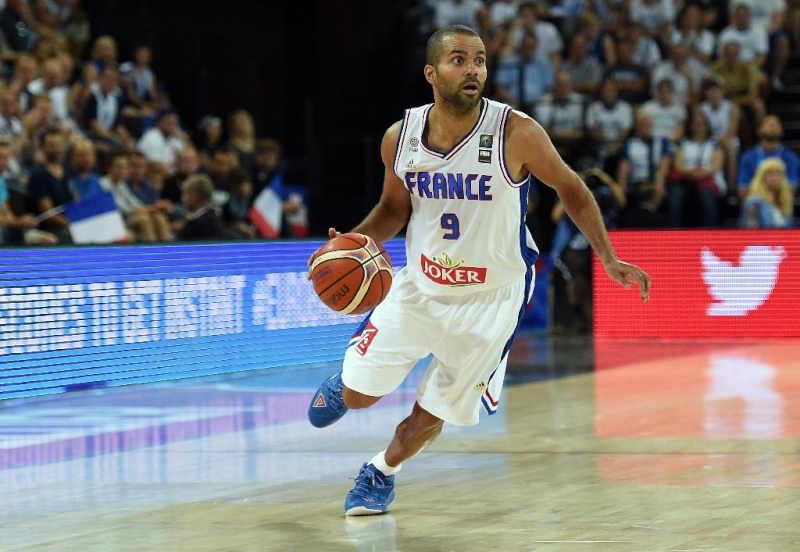
ESSAYER LE BASKET
Le BASKETBALL est le SPORT # 2 dans le MONDE et l'un des sports les plus faciles d'accès.
Pour tester, il suffit d’avoir un panier et un ballon à disposition. Rien de plus. Même pas forcément de partenaires, puisque le basket est un sport collectif que l’on peut pratiquer… tout seul, en dribblant le ballon et en effectuant des tirs au panier.
L’idéal est tout de même de réunir quelques amis et/ou de se rendre sur un playground si on veut vraiment se faire une idée de ce que représente un match de basket.


Tous les playgrounds de Paris " SPORTROOPS " @ http://blog-fr.sportroops.com/trouver-terrain-de-basket-paris/
Projet du site www.sportroops.com : collecter toutes les informations de tous les terrains de basket de Paris et offrir une base de données riche et accessible à tous et tout le temps (dispo sur mobile !).
Pour choisir où et quand vous devriez jouer, retrouvez la liste des terrains notés en fonction de leur qualité par les joueurs qui les fréquentent, sachez qui y joue habituellement ou en temps réel, quelles parties y sont prévues dans les prochains jours et, quel est le niveau de jeu de chaque joueur sur place. Imbattable !
Sinon, il y a toujours la possibilité de s'équiper facilement d'un panier (ou mini panier) chez soi et pour un prix largement abordable.
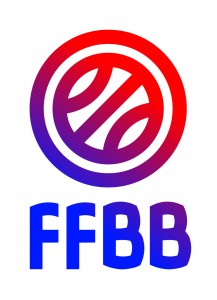
http://www.ffbb.com/
https://www.facebook.com/ffbasketball
COMMENT TROUVER UN CLUB ?
Si vous appréciez le basket au point de vouloir le pratiquer en compétition, il est possible de s’inscrire dans l'un des 5 500 clubs actuellement affiliés à la Fédération française de basket.
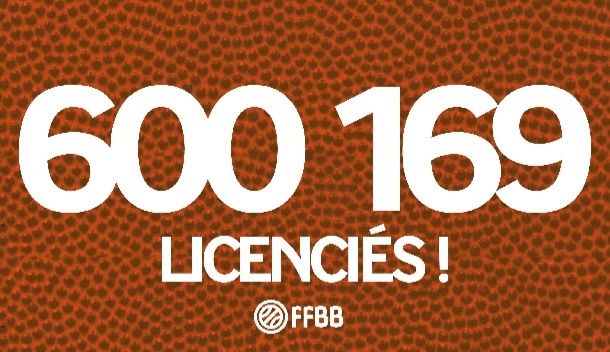
Sport collectif qui compte le plus de licenciés (700 000 fin 2016) derrière le football, le basket possède des clubs partout, avec une répartition relativement égale sur l’ensemble du territoire.
À noter que de nombreux licenciés de la FFBB sont âgés de moins de 10 ans.
Un chiffre très élevé qui s’explique par le développement depuis plusieurs décennies du MiniBasket, réservé aux enfants de 6 à 10 ans.
Les règles sont adaptées aux plus jeunes (paniers plus bas, aires de jeu réduites, ballons plus petits, équipes mixtes …) et permettent de rendre la pratique du basket plus ludique pour les enfants.
Si vous souhaitez inscrire votre enfant au basket, trouvez donc un club qui dispose du label “Ecole de MiniBasket”, qui est l’assurance qu’il disposera d’un accueil adapté. Les adolescent(e)s qui souhaitent jouer de façon régulière au basket peuvent s’inscrire à l’UNSS (Union nationale du sport scolaire) dans leur collège ou lycée.
L’UNSS a l’avantage d’être moins coûteuse et moins "contraignante" dans le degré d’implication que l’adhésion à un club.
Un atout pour les jeunes qui hésitent et n’ont pas la certitude de vouloir jouer toute une saison de basket en club. Au moment de choisir un club, il y a des informations qu’il est absolument nécessaire de demander pour être certain que celui-ci correspond à vos attentes.
Ces informations sont à la fois sportives - connaître le niveau où évoluent les différentes équipes du club, la qualité des entraîneurs - et pratiques : horaires des entraînements, prix de la cotisation, nom du gymnase où se déroule les entraînements et les matches...
Pour bien être couvert chaque fois que vous pratiquez le basketball, découvrez les Assurances sportives Axa en partenariat avec L’Equipe.

COMBIEN ÇA COÛTE ?
L’équipement
Même si les joueurs de basket sont souvent connus pour leur côté « bling-bling », l’équipement du débutant peut se limiter à une paire de chaussures, un maillot, un short et un ballon. Si l’on souhaite limiter au maximum les coûts, il est possible de dépenser moins de 100 euros au total pour toute la panoplie de l’apprenti basketteur.
Évidemment les prix peuvent rapidement monter lorsque l’on décide d’acheter un équipement plus sophistiqué, puisque le prix de certaines chaussures de basket dépasse par exemple les 200 euros...
La licence
L’autre forme de dépense est liée à l’inscription à un club pour les licenciés. Difficile d’évaluer son coût, puisqu’il est très variable et dépend de nombreux critères : l’emplacement géographique, le niveau du club, la qualité des encadrants... Pour donner une fourchette, on peut estimer que la cotisation se situe entre 60 et 120 euros dans la majorité des clubs pour une licence senior.
Pour les jeunes, les prix oscillent plutôt entre 30 et 80 euros, ce qui fait du basket un des sports qui nécessitent le moins de dépenses.
LES DÉMARCHES ADMINISTRATIVES
Pour s’inscrire dans un club et faire de la compétition, il faut disposer d’une licence délivrée par la Fédération française de basketball (FFBB).
Pour recevoir cette licence, chaque joueur doit disposer d’un certificat de non contre-indication établi par un médecin. Une simple visite chez son médecin traitant suffit donc pour se mettre au basketball.
OU PRATIQUER LE BASKETBALL ?
LISTE de 3916 CLUBS avec ILOSPORT

http://www.ilosport.fr/recherche/ou-pratiquer/resultat/clubs/#search;filter=sport\2%22Basket-Ball%22
INFOS & DETAILS

http://www.ffbb.com/
https://www.facebook.com/ffbasketball
Mission
Développer, promouvoir et gérer le basketball en France.
Company Overview
Le basketball est le 5e sport français en nombre de licenciés et le 2e sport collectif.
La FFBB compte plus de 600 000 licenciés (dont 40% de femmes) et 5500 clubs.
Info
Founded in 1932
Location
117 rue du Château des Rentiers
75013 Paris
FRANCE
Contact
Phone # 01 53 94 25 00
Email @ information@ffbb.com
Site @ http://www.ffbb.com
Facebook Page @ https://www.facebook.com/ffbasketball
This " one-of-a-kind " guide has been made in 2013 by Fred BULLOT ©
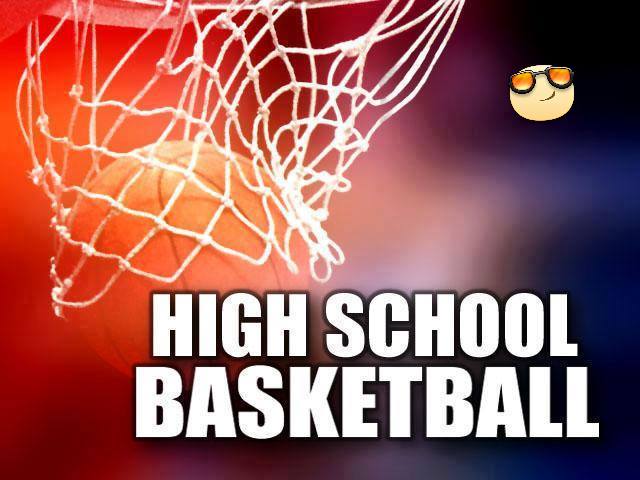
Bourse Sport-Etudes aux USA > BASKET / FOOT / TENNIS / GOLF / FOOT US / NATATION / VOLLEY / ATHLE / HAND / RUGBY .. ©

Dwight Howard and Joakim Noah at the 2004 EA Sports Roundball Classic
Joakim NOAH / Best EUROPEAN High School PLAYER of ALL TIME !
http://www.nba.com/bulls/news/noah_feature_071004.html
http://usatoday30.usatoday.com/sports/preps/basketball/2004-03-22-noah_x.htm
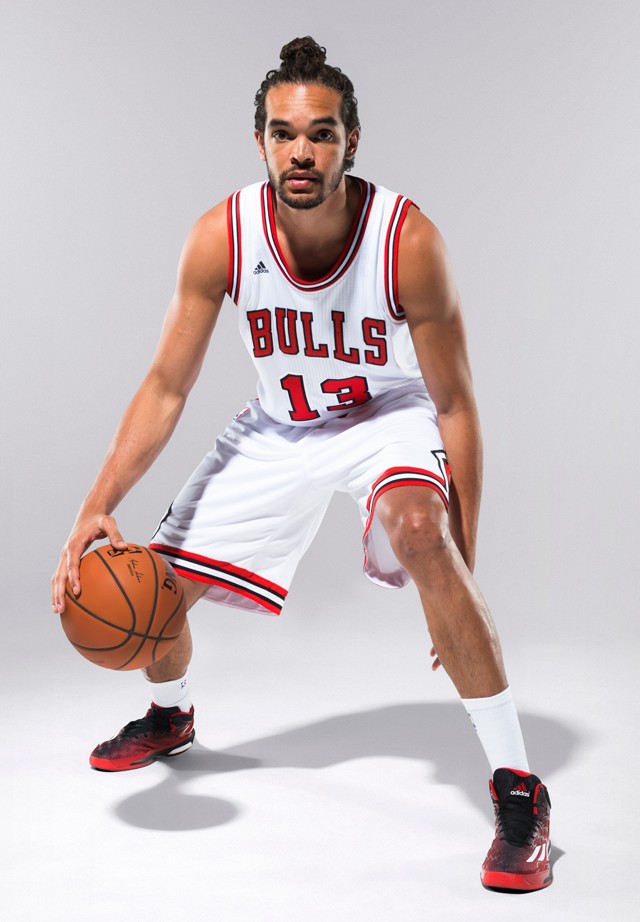
Comme Joakim NOAH pars JOUER au BASKET en PREP SCHOOL aux USA !
TOP 10 " PREP BASKETBALL ACADEMY " recrute joueurs FRANCAIS, BELGES & SUISSES

Formule flexible et compétitive :
- Pas de SAT
- Pas de TOEFL
- Pas de VIDEO
- Pas de TAILLE MINIMALE
- Pas de NIVEAU BASKET MINIMUM
- Pas de NIVEAU PHYSIQUE MINIMUM
- Pas de NIVEAU D'ANGLAIS MINIMUM
- Pour joueurs (14 à 24 ans) du monde entier (Europe, Amérique, Asie & Moyen Orient)
Prix : 10 000 € / an (bourse partielle de 60% / Prix officiel 20 000 $)
Ce prix comprend :
- Hébergement en pension complète
- Basketball de haut niveau (40 à 60 games)
- Etc ..
Contact Fred BULLOT @
E-mail : fredbullot@hotmail.com
E-mail : fredbullot@yahoo.com
Blog : http://fredbullot.over-blog.com/#
Skype : " fredbullot "
Facebook " fred bullot " : https://www.facebook.com/fredbullot
Facebook " Indian Basketball Student-Athletes in the USA " (50 000 members / The " # 1 Basketball Group on Facebook ") !! : https://www.facebook.com/groups/181895578687549/
Twitter : https://twitter.com/fredbullot
(y) 8-) (y) B| (y) 8-) (y)
Bourse Sport-Etudes Aux USA : BASKETBALL / FOOTBALL / TENNIS / GOLF / FOOT US / NATATION / BASEBALL / VOLLEY / RUGBY / HANDBALL / ..

http://fredbullot.over-blog.com/
(y) 8-) (y) B| (y) 8-) (y)
ELITE AMERICAN '' PREP / BASKETBALL ACADEMIES '' are RECRUITING PLAYERS from INDIA / ASIA (China, Japan, Korea, Philippines, Thailand, ..), EUROPE (France, Germany, GB, Belgium, Switzerland, ..) & MIDDLE EAST (Maghreb, Saudi Arabia, United Arab Emirates, Qatar, Israel, ..)

http://fredbullot.over-blog.com/
(y) 8-) (y) B| (y) 8-) (y)
Le GUIDE MONDIAL des VIDEOS de BASKETBALL by Fred BULLOT

http://58-rue-de-longchamp.forumactif.org/t13-le-guide-mondial-des-videos-de-basketball-by-fred-bullot
(y) 8-) (y) B| (y) 8-) (y)
APPRENDRE A JOUER AU " LUCKY LUKE " BASKET by Fred BULLOT

http://58-rue-de-longchamp.forumactif.org/t4-apprendre-a-jouer-au-lucky-luke-basketball-by-fred-bullot
(y) 8-) (y) B| (y) 8-) (y)
The AMERICAN BASKETBALL GLOSSARY by Fred BULLOT

http://58-rue-de-longchamp.forumactif.org/t6-the-american-basketball-glossary-by-fred-bullot
(y) 8-) (y) B| (y) 8-) (y)
Le GLOSSAIRE du BASKETBALL AMERICAIN by Fred BULLOT

http://58-rue-de-longchamp.forumactif.org/t12-le-glossaire-du-basket-americain-english-french-glossary-of-american-basketball-by-fred-bullot
(y) 8-) (y) B| (y) 8-) (y)
CONSEILS pour " DEBUTER LE BASKET en FRANCE et OU LE PRATIQUER ? LISTE DES CLUBS "

http://58-rue-de-longchamp.forumactif.org/t8-conseils-pour-debuter-le-basketball-en-france-et-ou-le-pratiquer-liste-des-clubs-by-fred-bullot
(y) 8-) (y) B| (y) 8-) (y)
Le TOP 10 MONDIAL des Sports-Etudes UNIVERSITAIRES

http://58-rue-de-longchamp.forumactif.org/t11-le-top-10-mondial-des-sports-etudes-universitaires-by-fred-bullot
(y) 8-) (y) B| (y) 8-) (y)
PROPER BASKETBALL SHOOTING TECHNIQUE, FUNDAMENTALS & FORM

https://www.facebook.com/photo.php?fbid=10153060852090645&set=a.10152178310040645.1073741830.632605644&type=3&theater
(y) 8-) (y) B| (y) 8-) (y)
SWIMMING is THE MOST HEALTHY SPORT in the WORLD by Fred BULLOT

https://www.facebook.com/notes/fred-bullot/swimming-is-the-most-healthy-sport-in-the-world-/510303185699886
(y) 8-) (y) B| (y) 8-) (y)
TOP 5 PUBLIC SPEAKING TICS & SPEACH VIRUSES by Fred BULLOT

http://58-rue-de-longchamp.forumactif.org/t7-the-top-5-public-speaking-tics-speach-viruses-by-fred-bullot
(y) 8-) (y) B| (y) 8-) (y)
" PUBLIC COMMUNIST SCHOOLS ARE PRISONS & INDOCTRINATION CAMPS " by Fred BULLOT

http://58-rue-de-longchamp.forumactif.org/t16-public-communist-schools-are-prisons-indoctrination-camps-by-fred-bullot
(y) 8-) (y) 8-) (y) 8-) (y)
THE BEST FREE-MARKET ANARCHIST VIDEOS & PODCASTS by Fred BULLOT

http://58-rue-de-longchamp.forumactif.org/t5-the-best-free-market-anarchist-videos-podcasts-by-fred-bullot
(y) 8-) (y) 8-) (y) 8-) (y)
TOUT SAVOIR sur L'ÉCOLE AUTRICHIENNE d'ECONOMIE by Fred BULLOT

http://58-rue-de-longchamp.forumactif.org/t2-tout-savoir-sur-l-ecole-autrichienne-d-economie-la-philosophie-anti-marxiste-1-dans-le-monde-by-fred-bullot
la Philosophie Anti-Marxiste # 1 dans le Monde (Censuré par les " Merdias " et Education Nationale Socialo-Fasciste) !
Partout sur la planète, de nombreux étudiants découvrent les principes de l'école autrichienne. La technologie de l'information avec le succès d'internet accroît cette tendance !!
(y) 8-) (y) B| (y) 8-) (y)
" L'EDUCATION NATIONALE SOCIALO-FASCISTE est une PRISON & UN CAMP D'ENDOCTRINEMENT " by Fred BULLOT

http://58-rue-de-longchamp.forumactif.org/t17-l-education-nationale-socialo-fasciste-est-une-prison-un-camp-d-endoctrinement-by-fred-bullot
(y) 8-) (y) B| (y) 8-) (y)
Fred BULLOT DIGEST

http://58-rue-de-longchamp.forumactif.org/t15-fred-bullot-digest

BASKETBALL is the # 1 SPORT for GIRLS in the WORLD !!
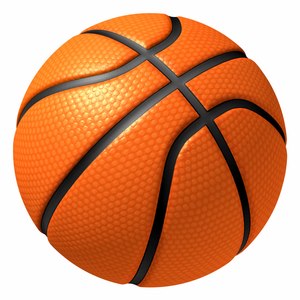
The SPORT of The 21st CENTURY
The # 1 SPORT on INTERNET
The # 1 SPORT on FACEBOOK
The # 1 SPORT on TWITTER
The # 1 SPORT on VINE
The # 1 SPORT in USA
The # 1 SPORT in ASIA
The # 1 SPORT in CHINA
The # 1 SPORT in PHILIPPINES
The # 1 SPORT in TAIWAN
The # 1 SPORT in LITHUANIA
The # 1 INDOOR SPORT in THE WORLD
The # 1 SPORT for GIRLS in THE WORLD
The # 1 Paralympics SPORT in THE WORLD
The # 1 UNIVERSITY SPORT in THE WORLD
NBA # 1 SPORT COMPANY in THE WORLD
NBA # 1 PAYING SPORTS LEAGUE in THE WORLD
NBA # 1 SPORTS LEAGUE on INTERNET
NBA # 1 SPORTS LEAGUE on YOUTUBE
The # 1 TEAM SPORT @ THE OLYMPIC GAMES
The # 2 SPORT in The WORLD
The # 2 SPORT in SOUTH AMERICA
The # 2 SPORT in RUSSIA
The # 2 SPORT in INDIA
The # 2 SPORT in SPAIN
The # 2 SPORT in ITALY
The # 2 SPORT in SERBIA
The # 2 SPORT in ARGENTINA
The # 2 SPORT in PORTUGAL
The # 2 SPORT in TURKEY
The # 2 SPORT in CANADA
The # 2 SPORT in QATAR ..
Tony PARKER # 5 BEST FOREIGN NBA PLAYER of ALL TIME
Tony PARKER # 1 FRENCH ATHLETE of ALL TIME
Tony PARKER RICHEST FRENCH ATHLETE of ALL TIME *
FRANCE # 1 FOREIGN COUNTRY in THE NBA
NBA is THE HIGHEST-PAYING SPORTS LEAGUE in THE WORLD
Michael JORDAN # 1 ATHLETE of ALL TIME
Michael JORDAN RICHEST ATHLETE of ALL TIME **
The FASTEST GROWING SPORT in THE WORLD
The MOST ATHLETIC SPORT in THE WORLD
The MOST SPECTACULAR SPORT
* (200 000 000 $)
** (1 000 000 000 $)
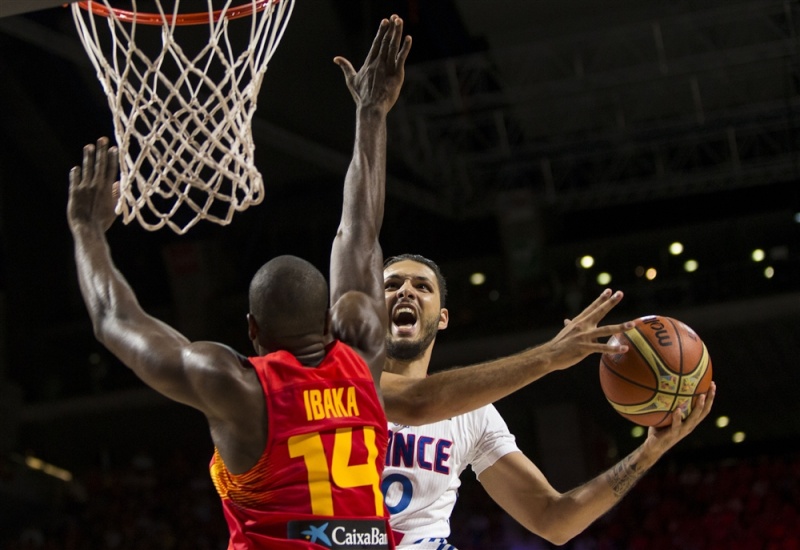
2014 FIBA BASKETBALL WORLD CUP

Evan FOURNIER (France) scores over Serge IBAKA (Spain)
http://www.fiba.com/basketballworldcup/2014
[/color]

fredb- Posts : 6
Join date : 2012-06-13
 Similar topics
Similar topics» " The WORLD GUIDE of BASKETBALL VIDEOS " by Fred BULLOT ©
» The " BEST OF " Nathan ADRIAN (USA) VIDEOS by Fred BULLOT ©
» Bikini Basketball
» BOA backs GB Basketball's bid
» Just how popular is Basketball?
» The " BEST OF " Nathan ADRIAN (USA) VIDEOS by Fred BULLOT ©
» Bikini Basketball
» BOA backs GB Basketball's bid
» Just how popular is Basketball?
The v2 Forum :: Sport :: Other sports :: Basketball
Page 1 of 1
Permissions in this forum:
You cannot reply to topics in this forum